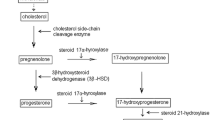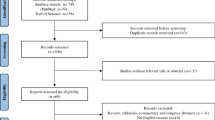Abstract
Adolescence constitutes a period of nutritional vulnerability due to increased dietary requirements for growth and development and special dietary habits. A pilot trial was performed to evaluate the dietary calcium utilization among a sample of Spanish boys on their usual diets, in which the calcium intake and consumption of dairy products were as well examined. Nutrient and food intake was recorded using a 24-h dietary recall and a 2-d food consumption record for 21 subjects aged 11–14 years. Dietary calcium utilization was assessed by means of calcium intake in food and calcium output in faeces and urine as measured by flame atomic absorption spectrophotometry. Overall intake of dairy products was 399.3±22.1 g/d, and the single most consumed item was milk (72% of the total). An inverse relationship was found between dairy product consumption at breakfast (55% of the total) and BMI (p=0.016, r=−0.5168). Dairy products contributed the majority of dietary calcium (66.9%). Mean calcium intake was 881.7±39.9 mg/d, 88% of the recommended value for Spanish adolescents. Net calcium absorption (271.7±51.7 mg/d) and retention (170.6±50.9 mg/d) seemed not to be sufficient to meet growth demands during puberty. The results shown that adolescents of the study absorbed 31% of dietary calcium and retained nearly 20% of the total intake, but dietary calcium intake and consumption of dairy products failed to meet recommended values. Optimizing calcium intake is of crucial importance among adolescents, to maximize calcium retention and to help prevent osteoporosis in later life.
Resumen
La adolescencia constituye una etapa vulnerable desde el punto de vista nutricional, tanto por sus elevadas necesidades para el crecimiento y la maduración como por sus especiales hábitos alimentarios. Este trabajo supone un estudio piloto diseñado para evaluar la utilización del calcio dietético en un grupo de 21 chicos de 11–14 años que consumen su dieta habitual, examinando la ingesta de calcio y el consumo de productos lácteos. La ingesta alimentaria fue evaluada mediante un recordatorio de 24-h y un registro estimado de alimentos de 2 días. Para evaluar la utilización del calcio de la dieta se analizó la excreción en orina y heces mediante espectrofotometría de absorción atómica. La ingesta media de productos lácteos fue de 399,3±22,1 g/día, aportando el 66,9% del calcio total de la dieta y siendo la leche el producto más consumido (72% del total). Se encontró una correlación inversa entra el consumo de lácteos en el desayuno (55% del total) y el IMC (p=0,016, r=−5,168). La ingesta media de calcio fue de 881,7±39,9 mg/d, lo cual supone el 88% del valor recomendado para adolescentes españoles. Las cifras de absorción (271,7±51,7 mg/d) y retención (170,6±50,9 mg/d) de calcio parecieron insuficientes para satisfacer las demandas para el crecimiento durante la pubertad. Los resultados mostraron que los adolescentes del estudio absorbieron el 31% del calcio dietético y retuvieron casi el 20%, aunque ni la ingesta de calcio ni el consumo de productos lácteos alcanzaron las recomendaciones. Una ingesta adecuada de calcio y ayudar a prevenir la osteoporosis en la edad adulta.
Similar content being viewed by others
References
Abrahams, S. A., Grusak, M. A., Stuff, J. E. and O’Brien, K. O. (1997):Am. J. Clin. Nutr.,66, 1172–1177.
Alexy, V., Sichert-Hellert, W. and Kersting, M. (2002):Br. J. Nutr.,87, 595–604.
Ballabriga, A. (2000):Eur. J. Clin. Nutr.,54, S1-S6.
Bueno-Lozano, G., Pérez-González, J. M. and Bueno, M. (1999): In “Nutrición en pediatría”. (Bueno, M., Sarriá, A. and Pérez-González, J. M., eds.). Ergon, Madrid, España. pp. 202–206.
Burckhardt, P. (1994): In: “Dairy products in human health and nutrition”. (Serrano Ríoset al., eds.). Balkema, Rotterdam, Holland. pp 431–438.
Chan, G. M. (1991):Am. J. Dis. Child.,145, 631–634.
Department of Community Services (1989) National Dietary Survey of Children Aged 10–15 years, No. 2 Nutritional Intake. Canberra: Australian Government Publishing Services.
Forbes, G. B. (1981): In: “Textbook of pediatric nutrition”. (Suskind, R. M., ed). Raven Press, New York. pp. 81–91.
Goulding, A., Cannan, R., Williams, S. M., Gold, E. J., Taylor, R. W. and Lewis-Barned, N. J. (1998):J. Bone Min. Res.,13, 143–148.
Guéguen, L. and Pointillart, A (2000):J. Am. Coll. Nutr.,19, 119S-136S.
Guéguen, L. (1992):Cah. Nutr. Diét.,27, 311–315.
Harel, Z., Riggs, S., Vaz, R., White, L. and Menzies, G. (1998):J. Adolesc. Health,22, 225–228.
Hernández, M., Castellet, J., Narvaiza, J. L., Rincón, J. M., Ruiz, I., Sanchez, E., Sobradill, B. and Zurimendi, A. (1988): “Curvas y Tablas de Crecimiento” (Growth Curves and Growth Tables). Instituto de Investigación sobre crecimiento y desarrollo. Fundación F. Orbegozo. Garsi, Madrid, Spain.
Keratetter, J. E. and Insogna, K. (1995):Nutr. Rev.,53, 328–332.
Lee, W. T. K., Cheng, C. Y., Jiang, J., Hu, X. and Roberts, D. C. (2002):J. Orthop. Sur.,10, 61–66.
Mataix, J., Mañas, M., Llopis, J. and Martinez-Victoria, E. (2000): “Tablas de composición de alimentos españoles” (Spanish Food Composition Tables). Universidad de Granada, ed. Granada, Spain.
Matkovic, V., Kostial, K., Simonovic, I., Buzina, R., Brodarec, A. and Nordin, B. E. C. (1985):Am. J. Clin. Nutr.,42, 270–274.
Matkovic, V. (1992):N. Eng. J. Med.,327, 119–120.
Molgaard, C., Thomsen, B.L. and Michaelsen, K.F. (1999):Arch. Dis. Chil.,81, 10–15.
Moreiras, O., Carvajal, A., Cabrera, L. and Cuadrado, C. (2004): In “Tablas de composición de alimentos”. Pirámide, Madrid, Spain, 8th ed., pp. 127–131.
Morton, J. F. and Guthrie, J. F. (1998):Fam. Econom. Nutr. Rev. 11, 44–57.
Moynihan, P., Adamson, A., Rugg-Gunn, A., Appleton, D. and Butler, T. (1996):Br. J. Nutr.,75, 495–505.
National Research Council. Food and Nutrition Board (1989) Recommended Dietary Allowances, 10th ed. Washington, DC, National Academic of Sciences.
NIH Consensus Conference (1994) Optimal Calcium Intake. JAMA272 (4): 1942–1948.
Ortega, R. M., Requejo, A. M., López-Solaber, A. M., Quintas, M.E., Andrés, P., Redondo, M. R., Navia, B., Lopez-Bonilla, M. D. and Rivas, T. (1998):Int. J. Vit. Nutr. Res.,68, 125–132.
Serra, L. and Aranceta, J. (2002): “Alimentación infantil y juvenil, Estudio EnKid, 3”. Masson, ed. Barcelona, Spain.
Serra-Majem, L., García-Closas, R., Ribas, L., Pérez-Rodrigo, C. and Aranceta, J. (2001):Pub. Health Nutr.,4, 1433–1438.
Smith, T. M., Kolars, J. C., Savaiano, D.A. and Levitt, M.D. (1985):Am. J. Clin. Nutr. 42, 1197–1200.
Wastney, M. E., Martin, B. R., Peacock, M., Smith, D., Jiang, X. Y., Jackman, L. A. and Weaver, C. M. (2000):J. Clin. Endocrinol. Metab.,85, 4470–4475.
Weaver, C. M. 1990):J. Nutr. 120, 1470–1473.
Weaver, C. M. (2000):Proc. Nutr. Soc. 59, 303–306.
Weinsier, R. L. and Krumdieck, C. L. (2000):Am. J. Clin. Nutr.,72, 681–689.
Zemel, M. B. (2004):Am. J. Clin. Nutr,79, 907S-912S.
Author information
Authors and Affiliations
Corresponding author
Rights and permissions
About this article
Cite this article
Seiquer, I., López-Frías, M., Muñoz-Hoyos, A. et al. Dietary calcium utilization among a group of spanish boys aged 11–14 years on their usual diets. J. Physiol. Biochem. 62, 9–16 (2006). https://doi.org/10.1007/BF03165801
Received:
Issue Date:
DOI: https://doi.org/10.1007/BF03165801




